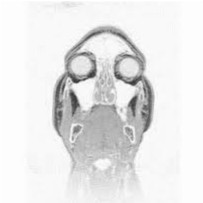Tag: data compression

Error-Free Computation of Daubechies Wavelets for Image Compression Applications
A novel encoding scheme for Daubechies wavelets is proposed. The technique eliminates the requirements to approximate the transformation matrix elements; rather, by using algebraic integers, it is possible to obtain exact representations for them. As a result, error-free calculations up to the final reconstruction step can be achieved, which provides considerable improvement in image reconstruction accuracy.
Published in:
Electronics Letters (Volume:39 , Issue: 5 )
- Page(s):
- 428 – 429
- ISSN :
- 0013-5194
- INSPEC Accession Number:
- 7564225
- DOI:
- 10.1049/el:20030318
- Date of Publication :
- 6 Mar 2003
- Date of Current Version :
- 02 April 2003
- Issue Date :
- 6 Mar 2003
- Sponsored by :
- Institution of Engineering and Technology
- Publisher:
- IET
K. A. Wahid, V. S. Dimitrov, G. A. Jullien and W. Badawy, “Error-Free Computation of Daubechies Wavelets for Image Compression Applications,” IEE Electronics Letters, Vol. 39, Issue 5 , 6 March 2003, pp. 428 -429

MRI Data Compression Using a 3-D Discrete Wavelet transform
A low-power system that can be used to compress MRI data and for other medical applications is described. The system uses a low power 3-D DWT processor based on a centralized control unit architecture. The simulation results show the efficiency of the wavelet processor. The prototype processor consumes 0.5 W with total delay of 91.65 ns. The processor operates at a maximum frequency of 272 MHz. The prototype processor uses 16-bit adder, 16-bit Booth multiplier, and 1 kB cache with a maximum of 64-bit data bandwidth. Lower power has been achieved by using low-power building blocks and the minimal number of computational units with high throughput.
Published in:
Engineering in Medicine and Biology Magazine, IEEE (Volume:21 , Issue: 4 )
- Page(s):
- 95 – 103
- ISSN :
- 0739-5175
- INSPEC Accession Number:
- 7389345
- DOI:
- 10.1109/MEMB.2002.1032646
- Date of Publication :
- Jul/Aug 2002
- Date of Current Version :
- 07 November 2002
- Issue Date :
- Jul/Aug 2002
- Sponsored by :
- IEEE Engineering in Medicine and Biology Society
- Publisher:
- IEEE
Wael Badawy, Guoqing Zhang, Mike Talley, Michael Weeks and Magdy Bayoumi, “MRI Data Compression Using a 3-D Discrete Wavelet transform,” The IEEE Engineering in Medical and Biology Magazine, Vol. 21, Issue 4, July/August 2002, pp. 95-103.

An Affine Based Algorithm and SIMD Architecture for Video Compression with Low Bit-rate Applications
This paper presents a new affine-based algorithm and SIMD architecture for video compression with low bit rate applications. The proposed algorithm is used for mesh-based motion estimation and it is named mesh-based square-matching algorithm (MB-SMA). The MB-SMA is a simplified version of the hexagonal matching algorithm [1]. In this algorithm, right-angled triangular mesh is used to benefit from a multiplication free algorithm presented in [2] for computing the affine parameters. The proposed algorithm has lower computational cost than the hexagonal matching algorithm while it produces almost the same peak signal-to-noise ratio (PSNR) values. The MB-SMA outperforms the commonly used motion estimation algorithms in terms of computational cost, efficiency and video quality (i.e., PSNR). The MB-SMA is implemented using an SIMD architecture in which a large number of processing elements has been embedded with SRAM blocks to utilize the large internal memory bandwidth. The proposed architecture needs 26.9 ms to process one CIF video frame. Therefore, it can process 37 CIF frames/s. The proposed architecture has been prototyped using Taiwan Semiconductor Manufacturing Company (TSMC) 0.18-μm CMOS technology and the embedded SRAMs have been generated using Virage Logic memory compiler.
Published in:
Circuits and Systems for Video Technology, IEEE Transactions on (Volume:16 , Issue: 4 )
- Page(s):
- 457 – 471
- ISSN :
- 1051-8215
- INSPEC Accession Number:
- 8891917
- DOI:
- 10.1109/TCSVT.2006.872780
- Date of Publication :
- April 2006
- Date of Current Version :
- 01 May 2006
- Issue Date :
- April 2006
- Sponsored by :
- IEEE Circuits and Systems Society
- Publisher:
- IEEE
Back to a complete list of Peer-Reviewed Journal Papers
Mohammed Sayed , Wael Badawy, “An Affine Based Algorithm and SIMD Architecture for Video Compression with Low Bit-rate Applications“, IEEE Transactions on Circuits and Systems for Video Technology, Vol. 16, Issue 4, pp. 457-471, April 2006. Abstract
Towards an H.264/AVC HW/SW Integrated Solution: An Efficient VBSME Architecture
Abstract:
This paper presents an efficient real-time variable block size motion estimation architecture. The proposed architecture provides motion vectors for each 16 times 16 block and its 40 sub-blocks. The proposed architecture is a single-instruction multiple-data architecture integrated with embedded SRAMs on one chip. The architecture has been prototyped using Xilinx Virtex-4 XC4VSX35-10 field-programmable gate array. It processes 30-CIF fps using 71-MHz clock frequency. Its maximum clock frequencyuency is 187.7 MHz and the maximum throughput is 20 4CIF fps. The prototyped architecture has 175 k gates and 18 kbits embedded SRAM.
Published in:
Circuits and Systems II: Express Briefs, IEEE Transactions on (Volume:55 , Issue: 9 )
- Page(s):
- 912 – 916
- ISSN :
- 1549-7747
- INSPEC Accession Number:
- 10185530
- DOI:
- 10.1109/TCSII.2008.923398
- Date of Publication :
- 23 May 2008
- Date of Current Version :
- 29 August 2008
- Issue Date :
- Sept. 2008
- Sponsored by :
- IEEE Circuits and Systems Society
- Publisher:
- IEEE
Mohammed Sayed, Wael Badawy, and Graham Jullien, “Towards an H.264/AVC HW/SW Integrated Solution: An Efficient VBSME Architecture”, IEEE Transactions on Circuits and Systems II, Volume: 55, Issue: 9, pp. 912-916, Sept. 2008.
Link to the list of other Peer Journal Publications
